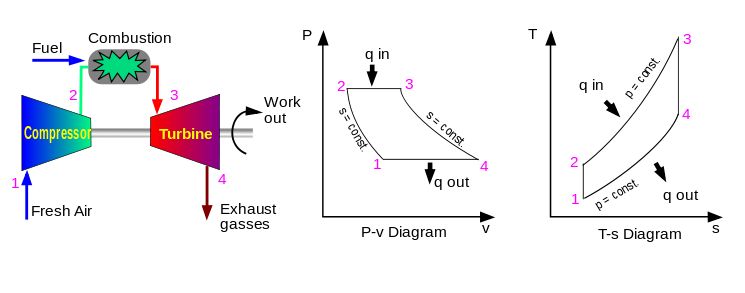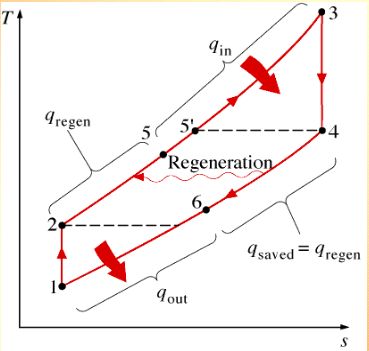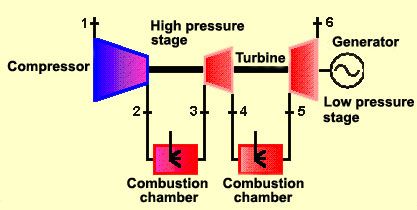Methods To Improve Performance Of A Gas Turbine.
Feb 20, 2019 • 40 views
Introduction:
A gas turbine is a machine delivering mechanical power or thrust. It does this using a gaseous working fluid. The mechanical power generated can be used by, for example, an industrial device.
The gas turbine is the most satisfactory way of producing very large quantities of power in a self contained & compact unit . The gas turbine can be used in conjuction with the oil engine in future.
The outgoing gaseous fluid can be used to generate thrust. In the gas turbine, there is a continuous flow of the working fluid.
Working Principle of a Gas Turbine :
The gas turbine works by the utilising the energy of a jet of gases & air. It consists of several rings of moving blades which are fixed to a common shaft. The velocity of the jet will be absorbed as it flows over the moving blades & as a result the turbine shaft rotates. A gas turbine requires an air compressor which is usually driven by the turbine shaft itself. Thus a considerable proportion of the power produced is absorbed by the compressor & thus lower the overall efficiency.
Advantages of a Gas Turbine :
A gas turbine is used for power generation because of its simplicity lack of cooling water.
Quick & easy installations.
Can be used in oil & gas industries because of cheaper supply of fuel & low installation cost.
Limitations of a Gas Turbine :
Overall efficiency of the plant is low.
Non reversibility
Higher rotor speed
Brayton Cycle :
The Brayton cycle is a thermodynamic cycle named after George Bailey Brayton that describes the workings of a constant pressure heat engine.
The Brayton Cycle describes the following relations of a Gas Turbine. They are :
1. Adiabatic process – compression
2. Isobaric process – heat addition
3. Adiabatic process – expansion
4. Isobaric process – heat rejection
The efficiency of the ideal Brayton cycle is, where rp = P2/P1 is the pressure ratio and k is the specific heat ratio.
Work Ratio : It is defined as a ratio of net work obtained from the plant to the turbine work. Rw = Wt- Wc/Wt

Methods to Improve Performance of a Gas Turbine :
1. Increasing Pressure Ratio : Increasing the pressure ratio increases the efficiency of the Brayton cycle.
2. Regeneration : The exhaust gasses from the turbine carry a large quantity of heat with them since their temperature is far above the ambient temperature.
They can be used to heat air coming from the compressor there by reducing the mass of fuel supplied in the combustion chamber.
Theoretically it is possible to raise the temperature of the compressed air from T2 to Tx =T4 i.e… the temperature at the outlet of the turbine , however practically the temperature to which the air is preheated will be less than Tx or T4 i.e…
Say Ta, then
EFFICIENCY WITHOUT REGENERATOR =Wt-Wc /heat=Cp(T3-T4)-Cp(T2-T1) /Cp(T3-T2)
EFFICIENCY REGENERATOR=Wt-Wc /heat=Cp(T3-T4)-Cp(T2-T1) /Cp(T3-Ta)
Since heat decreases, efficiency increases.

3. Reheating : It is seen that regenerator improves the thermal efficiency of the cycle but does not improves the work ratio.
The working ratio can be improved either by decreasing the compressor work or by increasing the turbine work.
This can be achieved by employing two stage compression with intercooling & two stage expansion with reheating.

Conclusion :
By the above article we came to know that there are three ways to increase the performance of the gas turbine :
1.By Increasing pressure ratio
2.By Regenerating
3.By Reheating
